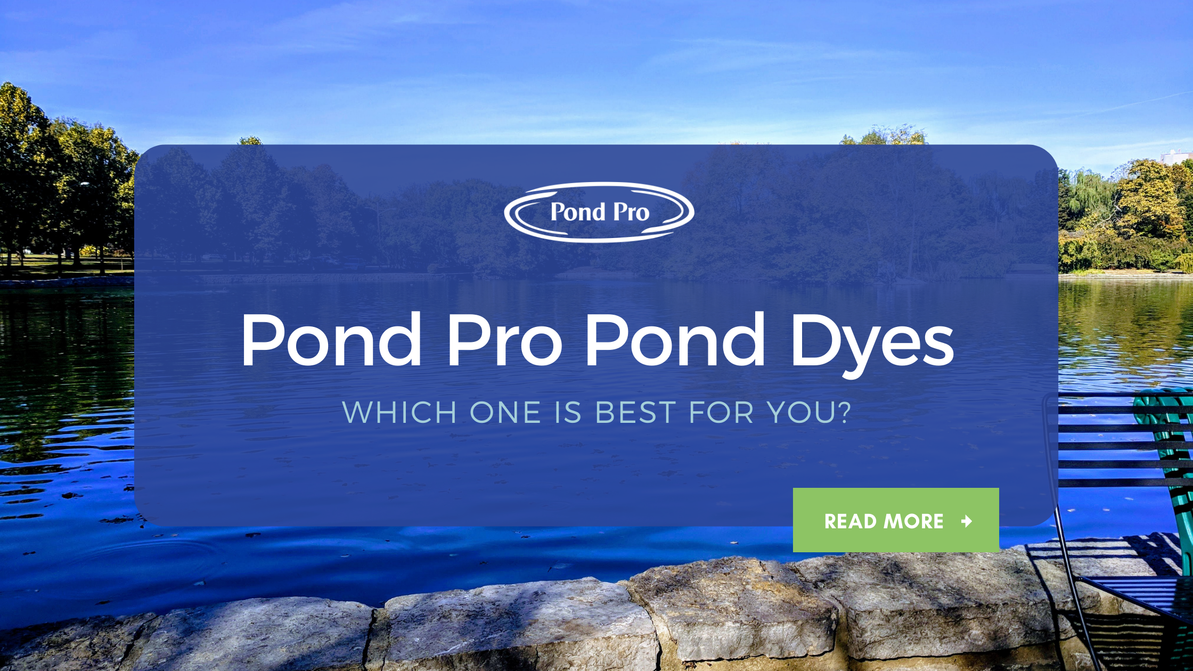Pond Pro Pond Dyes: Which One is Best For You?
Experiment Conducted By: Neil Wachowicz
Introduction
The tranquil beauty of a pond is often enhanced by the play of color on its surface. Pond dyes are a popular choice for achieving this effect, offering both aesthetics and functionality. But do you know what goes into making the right choice of pond dye for your specific needs? In this blog post, we take you on a journey through an experiment where one of our 2023 summer students compared two popular dyes and assessed their impact on various water metrics.
The Experiment
The Goal:
The experiment set out to-
- Compare two of our most popular dyes - Pond Pro Concentrated Blue Liquid Pond & Lake Dye PLUS and True Blue Liquid Dye
- Explore how these dyes can affect various water metrics.

Picture 1. North and South Ponds on satellite imagery, East of Pond Pro Canada. The high duckweed coverage of South Pond is visible.
The Application:
We applied 4.7L of True Blue Dye to the South Pond and 5L of Pond Pro Dye Plus to the North Pond.
Picture 2. Pond Pro Dye Plus being spread in North Pond via pedal boat on June 2, 2023.
Measuring Water Metrics:
Our summer student conducted extensive measurements, including-
- Surface and deep water temperature
- Dissolved oxygen
- pH
- Total dissolved solids (TDS)
- Electrical conductivity (EC)
- Lux (lumens per square meter)
- Secchi disk readings
- Water samples were collected and tested in our lab for phosphate levels, turbidity, and ammonia.
The Main Results
- Based on the deep LUX measurements, both True Blue and Pond Pro Plus dyes exhibited a very similar rate of returning to normal light penetration levels, which occurred after about 9 weeks. But! While light levels in deep water returned to normal after approximately 9 weeks, both ponds retained visible coloration at that same point.
- The persistence of color in the water, despite light penetration returning to normal, is significant:
- Those seeking to reduce predation and plant growth may need to redye their ponds around the 9-week mark to maintain light suppression.
- Conversely, customers dyeing ponds for aesthetic purposes may opt to wait longer, as both ponds remained visibly colored even though they no longer affected light penetration.
- The color evolution of both dyes was interesting.
- Pond Pro Plus: transformed from a relatively dark blue to a darker turquoise-blue reminiscent of mountain water.
- True Blue: evolved into a green-turquoise hue over time (Note: this may be because of the presence of duckweed and algae within the water column of the South pond. Other bodies of water may have varying colour evolutions).
Conclusion
This experiment offered valuable insights into two of our most popular dyes - Pond Pro Concentrated Blue Liquid Pond & Lake Dye PLUS and True Blue Liquid Dye. The persistence of color, even after light levels return to normal, may or may not influence how much dye you wish to apply!
These discoveries underscore the importance of ongoing research and development in the field of pond dyes. By continually refining our understanding of how dyes affect water metrics, we can better serve our customers and enhance their pond dyeing experiences. We are very thankful for the work our summer students put in to making Pond Pro your go-to supplier for all of your water needs!
Turn Tips into Action – Shop this Blog Post!
Recent Posts
-
Winter Water Chemistry: What Happens Under the Ice
Winter Water Chemistry: What Happens Under the Ice When winter sets in and the pond freezes over, th …18th Dec 2025 -
Top Gift Ideas for Pond Owners: Practical, Fun & Perfect for Any Season
With the holiday season quickly approaching, it’s the perfect time to start thinking about meaningfu …4th Dec 2025 -
De-Icing System Sizing Guide: How to Pick the Right System for Your Pond or Dock
Learn how to size, install, and position a pond or dock de-icer for cold climates. Protect your fish …28th Nov 2025




